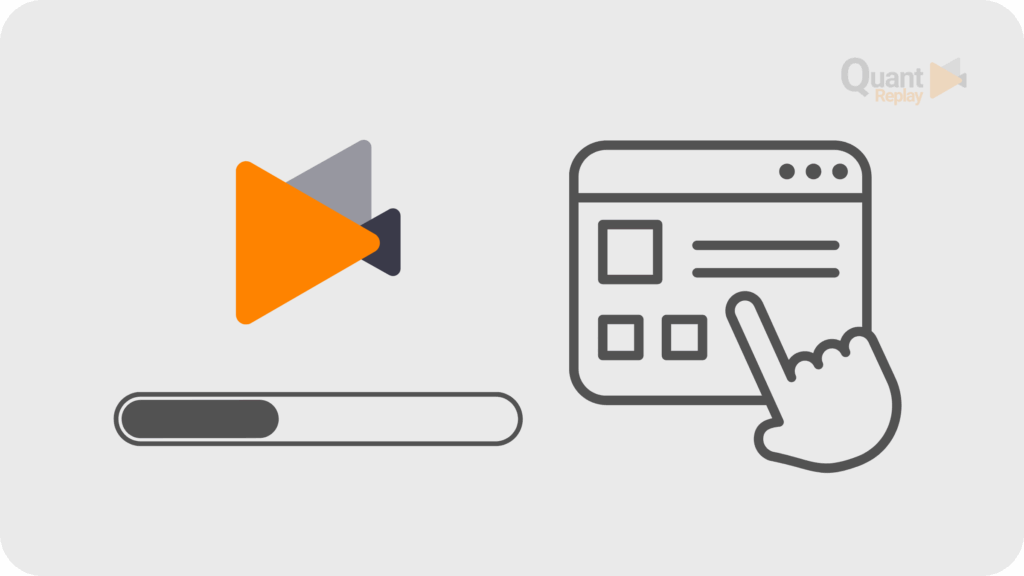
Quickstart Guide #
The simplest way to get started with QuantReplay is to run it in a Docker Compose:
- Create a directory.
- Create a
docker-compose.ymlfile in that directory. - Copy the following example in the
docker-compose.ymlfile:
networks:
market-simulator-net:
driver: bridge
services:
XETRA:
image: ghcr.io/quod-financial/deploy_marketsim:develop
container_name: XETRA
networks:
- market-simulator-net
ports:
- "9050:9050" # Port to send REST API requests
- "9051:9051" # Port to send FIX messages
volumes:
- ./:/market-simulator/quod/data/
environment:
- INSTANCE_ID=XETRA
- PREFIX=QUOD
depends_on:
liquibase:
condition: service_completed_successfully
database:
image: ghcr.io/quod-financial/postgres_marketsim:v13.4-init
container_name: market-simulator-database
networks:
- market-simulator-net
ports:
- 15432:5432
volumes:
- ./database_files:/var/lib/postgresql/data
environment:
- POSTGRES_DB=simdb
- POSTGRES_USER=postgres
- POSTGRES_PASSWORD=postgres
healthcheck:
test: [ "CMD-SHELL", "pg_isready --user=postgres --dbname=simdb" ]
retries: 2
interval: 5s
timeout: 10s
liquibase:
image: ghcr.io/quod-financial/liquibase:develop
container_name: market-simulator-liquibase
networks:
- market-simulator-net
depends_on:
database:
condition: service_healthy- Run the docker compose command to start the simulator:
docker compose up -d
- It will create a
cfgdirectory with the following structure:market_simulator.xml– main configuration file for QuantReplay (configuration documentation);configSim.txt– QuickFIX configuration file QuickFIX documentation;default– the directory with QuickFIX AppDataDictionary and TransportDataDictionary files of FIX 5.0 SP2 version.
- The database already contains the demo data, which can be used to test the simulator:
- XETRA venue;
- instruments:
- AMZ;
- MSF;
- NFC;
- VODI;
- VOW.
- Now you can send REST API requests and FIX messages to QuantReplay using:
- localhost:9050 for REST API requests;
- localhost:9051 for FIX messages.
The following Docker Image tags are available:
main– the latest stable version of QuantReplay. It is built from themainbranch of the repository.latest– the same asmain;develop– the latest development version of QuantReplay. It is built from thedevelopbranch of the repository.v10and so on – the stable released versions.
A comprehensive overview is available in the Wiki.
Get to know more about QuantReplay on GitHub.
For more information, visit quantreplay.com or contact us at info@quodfinancial.com
#
FAQ #
- What is QuantReplay?
QuantReplay is an open-source, multi-asset market simulator designed to meet the demands of today’s trading technology landscape. It provides:
- Multi-Asset Support: Simulate order-driven markets including Equities, FX, Futures, Derivatives, and Digital Assets.
- Market Listings & Phases: Configure multiple venues with standard symbology, market rules, and distinct phases such as continuous trading and auctions.
- Matching Engine: Industry-standard price/time priority order book logic with full order lifecycle handling and configurable order types.
- Historical Data Playback: Replay multi-level market data from files or databases for realistic backtesting.
- Synthetic Order Generation: Inject realistic, pseudo-random orders to emulate live market activity, with control over price ranges, volumes, and update rates.
- Interfaces Built for Developers:
- FIX API for order flow and market data publishing.
- REST API for remote configuration and system monitoring.
- Lightweight, Scalable Deployment: Runs as a single native process per venue, fully dockerized for easy deployment to any environment.
- Recovery Options: Save system state for seamless restart and high-availability testing.
- How to get started with QuantReplay?
Visit: github.com/Quod-Financial/quantreplay or Go through the detailed documentation to learn more .
- Is QuantReplay free to use?
QuantReplay is free, open source, and built for the community. Built by Quod Financial — a global leader in trading technology.
- Is QuantReplay open-source?
QuantReplay is designed with an open, community-first approach — extensible, adaptable, and welcoming contributions. The roadmap includes:
- Additional Market Phases: Support for auctions, trade-at-last phases, and more.
- Multi-Listed-Instruments: Synchronize price behavior across multiple listings of the same asset.
- Extreme Market Events: Schedule volatility spikes, market crashes, and stress scenarios.
- Client Simulation Mode: Run QuantReplay as a market participant to inject realistic order flows into third-party trading platforms.
- AI-Driven Market Simulation: Leverage Generative Adversarial Networks (GANs) for more advanced, real-time order generation that mirrors complex market dynamics.
- Quote-Driven Market Support: Extend to bilateral pricing workflows like FX streaming, RFQ (Request For Quote) models, and fixed income simulations.
- Why is QuantReplay free and open-source?
Quod Financial — a global leader in trading technology; believes the financial industry needs innovation —but innovation requires access.
- We want to democratize testing and automation. Most firms lack the tools or budgets to simulate real-world trading conditions. QuantReplay removes that barrier.
- We invite global collaboration. Developers and traders alike can build on QuantReplay, improving it for everyone.
- We're here to change the game. Quod Financial is committed to reshaping how trading tech is built and shared. Open-source is our way of giving back to the industry we serve.